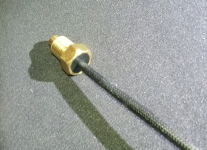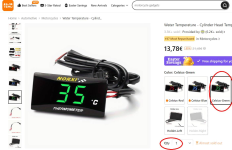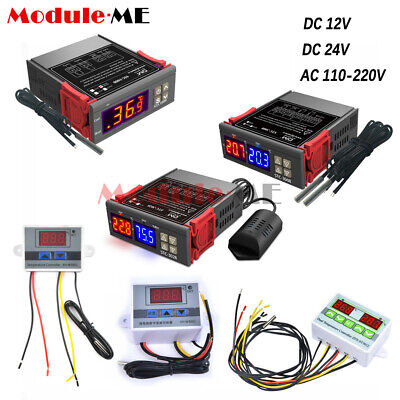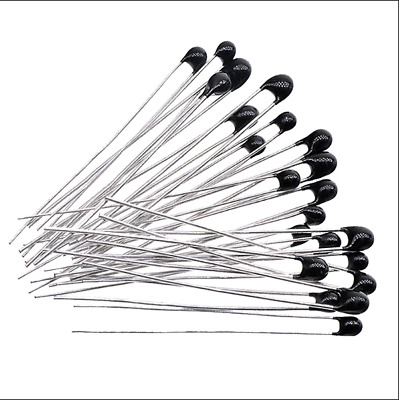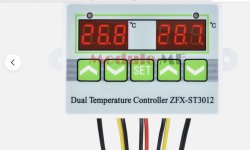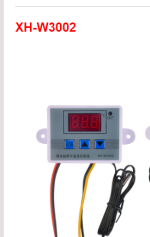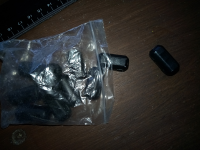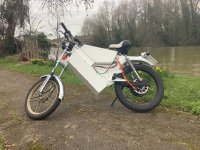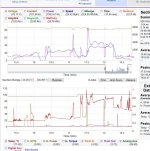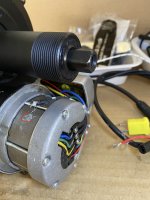I will be ordering the components after Easter to try them out. I don’t intend to ride in the pouring rain, although I may get caught out in the occasional shower. It will be mounted on my cockpit above the display. And I’m thinking about using a 12 volt piezo buzzer via the relay outputs to give me an audible warning so I don’t need to keep looking down at my cockpit. I did initially think about wiring the relays to my low brakes, but I’d prefer to have control rather than the controller automatically cutting power to the motor.
I‘m thinking of setting the controller alarm to 90C and motor alarm to 100C. But it depends how well it stands up to EMF noise. If it’s too noisy then the meters only give sensible readings with the throttle off, so the alarm won’t work properly because it will trigger with noise rather than real temperature. The wires are long, not twisted and not shielded. Soldering capacitors across the sensors may help, but I won’t know for sure until it’s all wired up and tested. With a bit of luck the 3012 has something already built in to compensate for noise, but it probably wasn’t designed for use in a such a noisy motor and controller.
I’m using an LM35 in the motor on a different bike, because I only have the white wire for temperature output from the motor and that suffers from noise. I fitted a snubber circuit that has improved it. It’s still not perfect, but good enough. I just let off the throttle or stop peddling when I want to see the real motor temperature.
My controller is an MQCON Sabvoton 72100 from Risunmotor and already has a thermistor to protect it, (top right in the photo). It measures around 2.57k ohms at ambient temperature. The settings aren’t user configurable so I’m assuming and hoping that it is all factory set in the firmware or hardware for thermal rollback and high temperature cut off.
But I also want to have a temperature meter, so I will put one of the NTC 10K thermistors next to the existing one inside the controller. Two sensors will fit on that pad. The other will replace the KTY83 inside the motor.
I have already fed a pair of wires (blue and green) into the controller for the NTC 10K and modified the external wiring for the motor temperature sensor. I don’t think it’s necessary to mount the sensor inside the controller if you are reticent about taking your controller apart. Glueing or bolting it to the case should give a reasonable result.
This Sabvoton doesn’t support motor temperature, there is no white wire on the hall sensor plug feeding into the controller, but I have 2 wires in the motor cable that I can use for an NTC 10K. They are both currently connected to one side of a KTY83. The other side of the KTY83 is connected to ground, so it’s an easy rewire inside the motor to swap the sensors around.
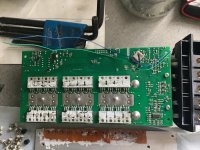
If you already have a 12 volt 3002 then you can do some testing. I won’t get my 3012 from China for two to three weeks on speed pack economy delivery. All I can do in the meantime is fit the temperature sensors to the controller and motor and finish the wiring.
I did a search on ES to try and find out what other people are doing for simple temperature monitoring, but it didn’t yield very good results. I also posted a new thread a few days ago about something similar and got hardly any response, but it was Sabvoton specific.
Hi all I have come across a problem with my controller when I try to set temperature settings using the MQCON app and they won’t save. I also only have one set of temperature configurable settings on the app for my iPad, Teranovo version. I have seen some screenshots of two sets, one for the...

endless-sphere.com
I think what DaLanMan is trying to explain is that to find out what kind of thermistor is fitted to the Norxi is to pierce the wires using pointed multimeter probes to measure the resistance at various temperatures to determine what value the thermistor is, because they don’t state the thermistor value on their website.
I chose the 3012 because the seller states that the thermistor is an NTC 10K and these are readily available all over the place for pennies.
